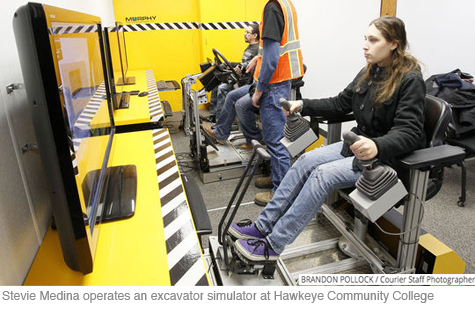 All over the country, there are significantly different headlines about women in the construction industry. There seems to be a mixed message. Some stories focus on the fact that women are finding fantastic careers in construction while others suggest it is too difficult for women to gain traction in the business.
All over the country, there are significantly different headlines about women in the construction industry. There seems to be a mixed message. Some stories focus on the fact that women are finding fantastic careers in construction while others suggest it is too difficult for women to gain traction in the business.
For example, the Hartford Courant recently reported "Progress Still Slow For Women Breaking Into Construction Jobs":
The barriers to women working in construction are many, advocates say — stereotypes about women's abilities from employers and co-workers, schools and families steering girls toward more traditional women's jobs, the lack of paid days off, and sexual harassment.
Women who don't have college degrees are concentrated in jobs like cashiers, sales clerks, nursing and personal care aides, child care workers — all of which pay about half what sheet metal workers and electricians earn.
The story, however, went on to highlight success stories of women like DeAnne Merrill, who has greatly improved her economic status by taking the plunge into the skilled trades:
Merrill, now 29, was able to move out when she began earning more than $17 an hour as an apprentice — half of the wage journeymen sheet metal workers earn. She's now in her second year, and makes 23 percent more than she did last year.
Although Merrill clearly loves welding, and finds the challenge of learning about ductwork interesting, she acknowledges the money "was one of the biggest things that drew me to it, too."
What do you know? The job is rewarding and pays well.
Meantime in Iowa, the Cedar Valley Business Monthly showcased women who are giving construction a try. The online magazine featured some women experimenting with virtual construction equipment:
“It does shake,” she said, half-smiling as she maneuvered levers on either side of her chair. Focusing on a video screen as one might while playing a video game, Medina clawed into a mound of dirt on a high-definition construction site. A flick of the “joy stick” on her left, and she lifted the dirt from the pile. She nudged the stick leftward, and the excavator’s “arm” moved toward a waiting dump truck. The scoopful of dirt now over the truck, Medina pushed forward on the right-hand lever, flicked the stick in her left hand and the dirt fell precisely into the truck bed.
Here in Texas, there are various groups and companies working diligently to bust the myths and preconceived notions some people have about construction. Construction Citizen attended a meeting at Community Family Centers in East Houston where construction executives visited with adult education students:
Maritza Guerrero, President and CEO of Community Family Centers said the organization was happy to host the discussion because it’s the kind of boost their students need. "I am thrilled to support this craft professional program because it opens more opportunities to our students that will help them achieve their dreams and hopes for a better future," Guerrero said.
"If you are willing to work, employers don't care about your shape, color, or whatever," said Saied Alavi, Division Operations Manager at Marek in Houston. Alavi told students they don’t necessarily even need any prior experience in construction to start working with the company.
At that same meeting, S&B Engineers and Constructors Vice President Randy Walker told students the need for craft professionals is going to grow exponentially in the years to come:
Working for S&B, Walker said people just starting out earn about $10 an hour. After about 90 days, a person is promoted to a “helper” in a craft and is placed in a training program. The wage increases will then quickly go from a dollar an hour to three dollars an hour depending on which craft a person has chosen.
One thing Walker noted as extremely positive was the number of women who attended the panel discussion. The perception that only large men can work in construction is simply false, Walker said. "You'll see that the physical demands of some of the crafts are a lot less than some of the others," he said. "Women fit in particular places and particular jobs much better than men do," he said, adding that women make fantastic heavy equipment operators.
For more information about jobs in the skilled trades, visit the Craft Careers section on SteelToePro.com.


